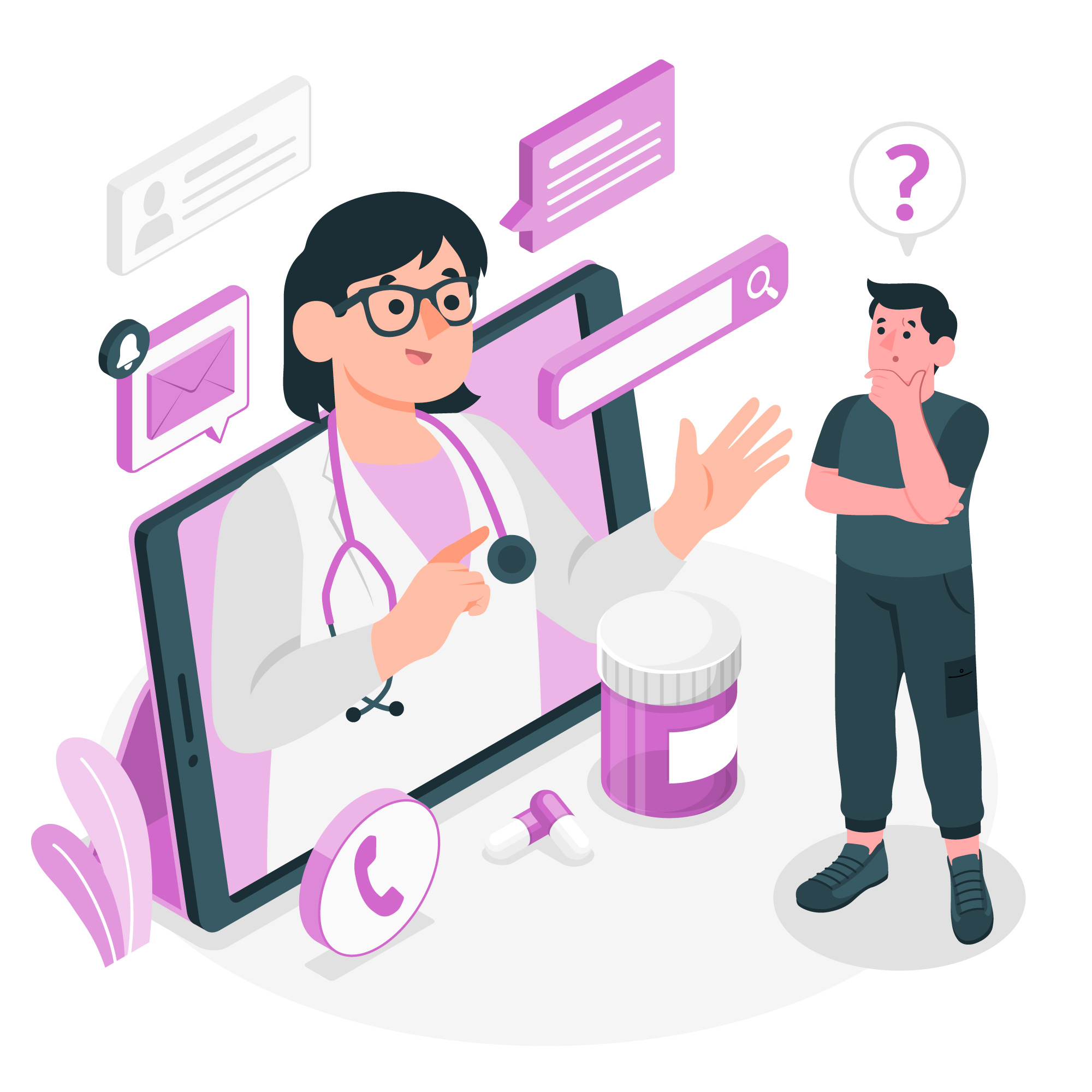Introduction
Digital Technology is seeping into every realm of life possible. In this era of technological advancements and shifting paradigms, telemedicine stands out as a transformative force in healthcare.
In simple words, telemedicine is the remote delivery of healthcare services and medical consultations through the use of digital communication technologies. Gone are the days when healthcare was confined solely to the walls of traditional medical facilities. Today, the best doctors are brought right to our personal locations, in the convenience of our homes.
Though telemedicine has been available for decades, it has grown in popularity only in recent years, especially after COVID. With its roots in the early 20th century when radio and telegraph was used to transmit information between health care providers, telemedicine has come a long way.
Innovations such as video conferencing, mobile health applications, and wearable devices are playing an important role in shaping the future. With the enhancement of internet services, healthcare is starting to reach every corner of the world.
So now let us discuss more facets of this exciting new field !
Popular Forms of Telemedicine
Some of the popular ways in which telemedicine provides services remotely are:
Live Video Conferencing: Video conferencing is used for medical consultations, follow-ups, and counselings. Patients and healthcare workers communicate in these sessions via a secure connection.
Store-and-Forward Telemedicine: This involves forwarding of medical data and test results from one expert to another for analysis and interpretation. Digital Transfer is both fast and convenient.
Remote Patient Monitoring: This involves monitoring of vitals like blood pressure, heart rate, glucose levels etc. and sending them to medical practitioners for analysis. It avoids the unnecessary hospital stay for chronically-ill patients.
Mobile Health Applications: These user-friendly apps are a one-stop shop for both doctors and patients for accessing medical records. Appointments can be scheduled, services can be activated and consultations can be accessed remotely.
Benefits of Telemedicine
Telemedicine benefits patients, providers and healthcare systems in the following ways:
Improves access to Health Care: Patients living in rural or remote areas or those who have mobility problems can access healthcare through telemedicine. Doctors are also available outside usual business hours.
Cost Savings: Telemedicine reduces visitation costs when it comes to follow-ups and remote patient monitoring. It also reduces staying costs by reducing readmissions and emergency room visits.
Improving Patient Outcomes: Telemedicine enables timely attention, as you don’t have to travel far to seek help. Also automated systems remind patients of treatment measures, which result in better recovery.
Improved Healthcare Provider Efficiency: Through telemedicine, healthcare providers are able to work more efficiently by reducing travel time and administrative tasks. Healthcare providers are also able to attend to more patients, which reduces wait times.
Challenges in Telemedicine
Several challenges confront the implementation of Telemedicine. Some of them are:
Technical Barriers: Since services have to be delivered electronically, reliable and secure communication technologies are required. High-speed internet is required to enhance usability and privacy is required for security.
Reimbursement Policies: Reimbursement policies vary widely by insurer and state. This leads to confusion and uncertainty for patients and providers. Insurance Companies need to have common minimum programs.
Licensing: Health providers using telemedicine can only cater to patients if they are licensed in the state. This makes it difficult for them to operate beyond state lines.
Physical Examinations: Many illnesses can be diagnosed via telemedicine but if you require a physical examination, then there is a challenge. Telemedicine lacks in this regard.
Limited Access to Some Patients: People living in rural areas may not have access to the same supplementary technologies and high speed internet as some of the city folk. Thus these sections of population may be at a disadvantage.
Building trust and relationships: Face-to-face conversations build trust and relationships between doctor and patient which cannot be matched by telemedicine. In this way it is a challenge to bridge the gap.
Conclusion
Thus definitely telemedicine is seen revolutionizing healthcare delivery in the 21st century. It offers unprecedented opportunities to improve access, efficiency, and quality of healthcare.
With several benefits to patients, providers and healthcare systems, it reduces costs, improves patient outcomes and increases patient engagement. By utilizing technologies like video conferencing and online consultations, it is bringing transformation everyday.
By working together and collaborating, we can create a future where telemedicine is seamlessly integrated in our systems, and deliver high-quality, accessible, and cost-effective care to one and all.
